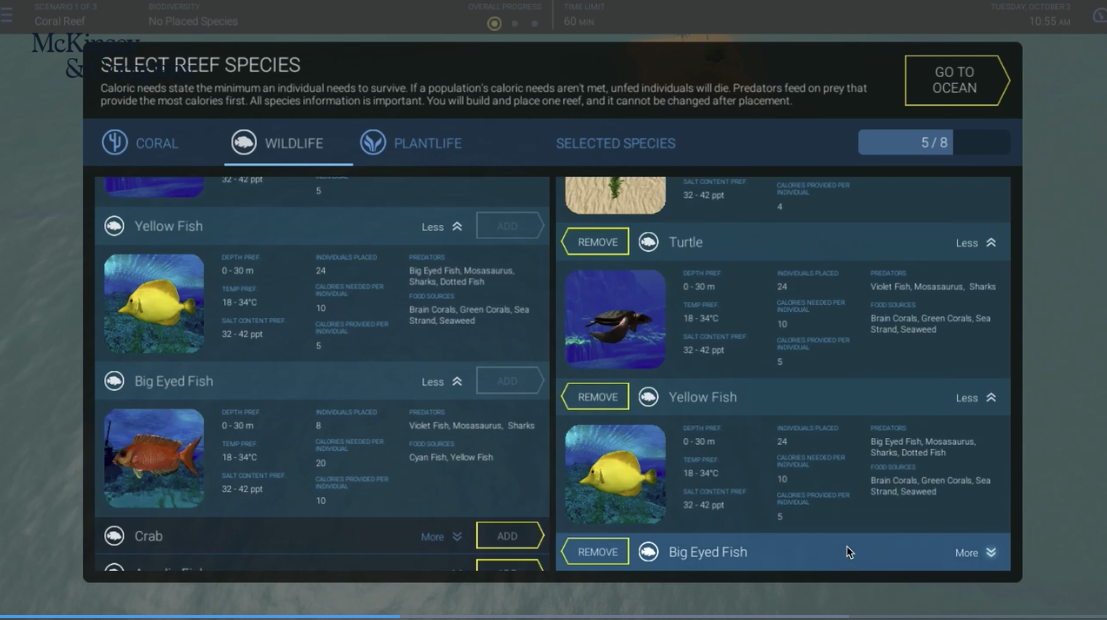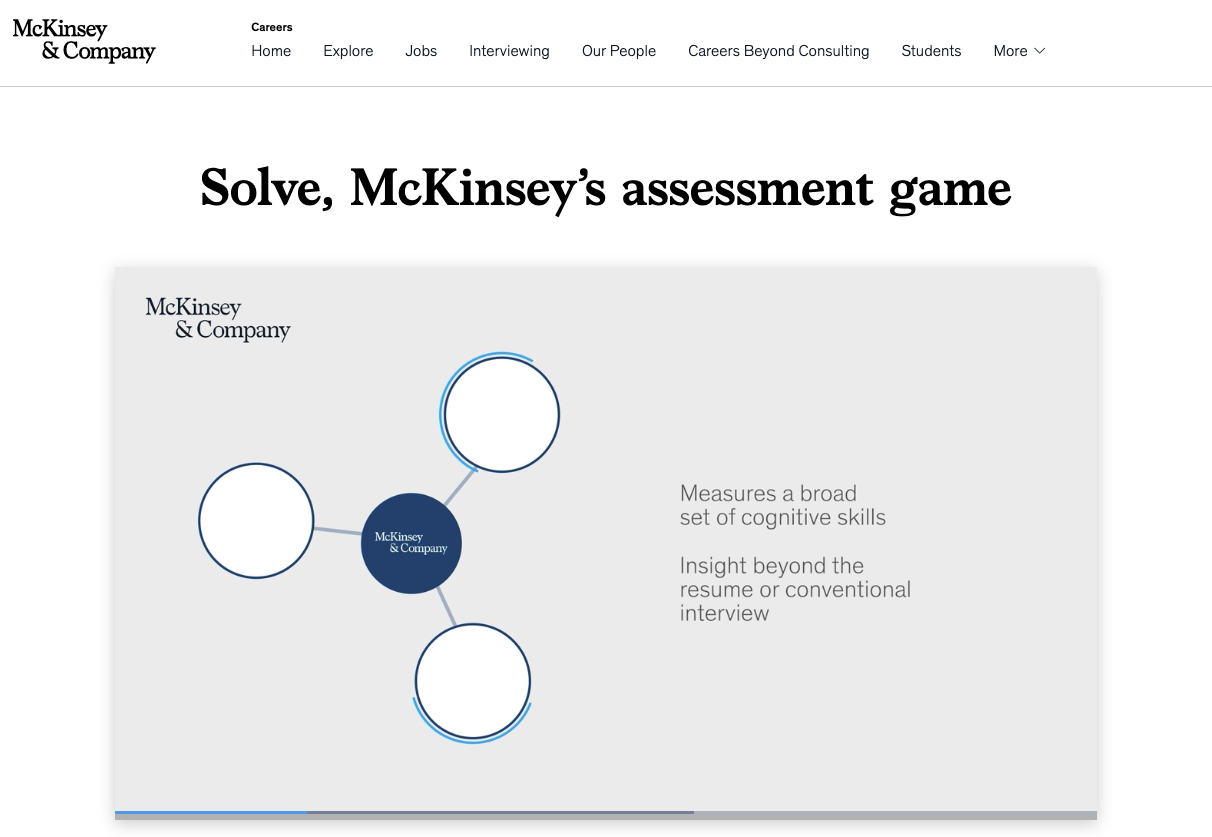Many candidates applying to McKinsey are focused on sharpening their resumes and practicing case interviews.
However, they forget that there’s another stage of the recruitment process: The McKinsey Problem Solving Game. And because they are unprepared, they don’t make it through to the case interview stage.
So in this article, we will teach you how to ace the McKinsey Problem Solving Game and progress through the recruitment process.
What is the McKinsey Problem Solving Game?
The McKinsey Problem Solving Game (also known as the McKinsey Digital Assessment, McKinsey Solve or the McKinsey Imbellus Test) is a gamified aptitude test that all candidates must take as part of the McKinsey recruitment process. It plays a similar role to the BCG Pymetrics Test.
The game has replaced paper-based aptitude tests and tests your cognitive and higher-order thinking skills in a simulated environment.

Who needs to take it?
The McKinsey Problem Solving Test is a compulsory stage of the recruitment process in most geographies.
Why does McKinsey use it?
McKinsey’s previous aptitude tests were more traditional question-answer style tests.
Because of this, candidates were able to prepare for the tests. They would gather advice from candidates who had already completed the test and practice similar standardized aptitude tests.
The issue for McKinsey was that they couldn’t differentiate a candidate’s preparation from their underlying skill, so they introduced the problem solving games.
What does the game evaluate?
The McKinsey Problem Solving Game evaluates the following abilities:
- Critical thinking: The ability to quickly and accurately synthesize and understand complex information.
- Decision-making: The ability to select the best course of action based on sometimes insufficient information.
- Metacognition: The ability to step back, evaluate the way you’re approaching the problem, and improve your approach.
- Situational awareness: The ability to understand and respond to complex and ever-changing environments.
- Systems thinking: The ability to figure out the underlying patterns and cause-effect relationships of an environment.

Format of the game
The McKinsey Problem Solving Game is designed to look and feel much like a video game.
You will be presented with a number of scenarios that are designed to test the five abilities we discussed earlier. The game will take 70 minutes in total.
Scenarios
Each scenario begins with a tutorial to help you familiarise yourself with the game. There is no time limit, so you should take your time to understand the scenario mechanics.
The McKinsey Problem Solving Game was updated in early 2023 and now only includes two games:
- Ecosystem management: You are required to build a sustainable ecosystem of species. There are animals and plants to be placed in the environment based on various factors like the food chain, terrain, nutrients, etc. You have to pick species and locations in such a way that it leads to the most suitable ecosystem.
- Redrock study: You a required to analyse the species present on an island. You have to make predictions based on evolution patterns and population statistics.
Previously, McKinsey included the plant defense game, disaster management game, disease management game, and migration management game. However, these have all been removed.
Tips for acing the game
Without question, the best way to ace the McKinsey Problem Solving Game is to learn the game logic and practice game simulations before you take the real thing.
The best solution for this is a simulation package like PSG Secrets. It includes video walkthroughs of the scenarios, Excel game solver templates, and simulation games to practice the game ahead of time. It also boasts an 89% success rate and has a 100% money-back guarantee.

In addition, there are other things you can do to increase your chance of success:
- Familiarize yourself with the gamified environment. Watch preview videos that are available online and test out similar games.
- Review the scenario introduction thoroughly. Don’t rush through, as you can take as much time as you need.
- Ensure that you have at least 90 minutes of time that is completely free of distractions. The test takes 70 minutes but you’ll use the extra time to familiarize yourself with everything.
- Learn to be comfortable making decisions with limited information. The game is designed to test your ability to make quick, judgment calls with insufficient data.
How important is the game?
The McKinsey Problem Solving Game is an important part of the recruitment process. However, McKinsey doesn’t make a decision solely from your game results.
Your results will be considered together with the rest of your application, and a decision will be made as to whether you progress to the case interview stage.
Fortunately, McKinsey will provide you with your score and which quartile of benchmarked scores you fall into (e.g. top 25%, 25-50%, etc).